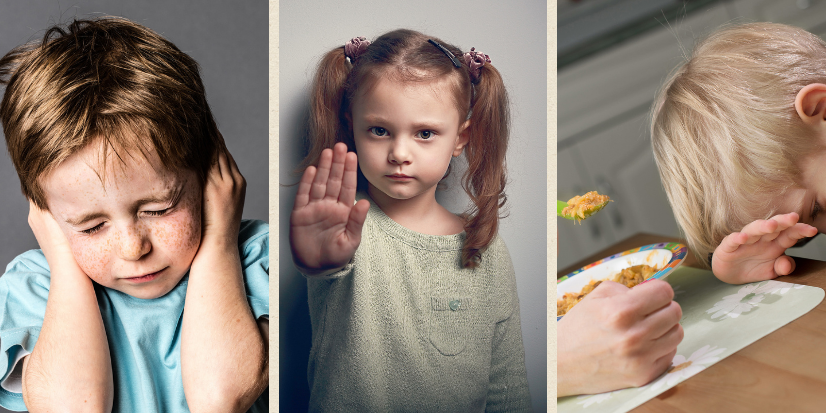Signs of sensory processing disorder in children
- Posted On:
- Written By: Felicia Messimer

Oversensitivity to sound or light. Crashing into people or things. Throwing fits when you try to put clothes or shoes on. Does this sound like your toddler? If so, your child may not just be difficult or simply throwing temper tantrums. They may have sensory processing disorder (SPD).
What is Sensory Processing?
Sensory processing is something that most people take for granted every day. We process our everyday environment through sight, hearing, smell and taste. The fifth sense, touch, is broken into the categories of:
- Tactile—pressure, pain, vibration, and temperature
- Vestibular—change in head position and body movement
- Proprioception—awareness of where our body is in space
We use these senses to explore and engage with our environment. However, children who have a sensory processing disorder (SPD) may struggle with some, or all, of these senses. And this may affect their well-being.
For example a child with good sensory processing can switch from an active less formal task, such as recess, to a more structured activity, such as sitting quietly during reading time, with little to no difficulty. A child with sensory processing difficulties may react in an inappropriate manner, such as shutting down or being overly active, or what some people refer to as “out of control.” Ultimately, this can impact their emotional and social needs, as well as be a problem for learning.
Signs of Sensory Processing
According to Sensory World these are 10 common signs of children who may have a sensory processing disorder:
- Extra Sensitive to Touch: some children may want to be held or touched all the time, or don’t want to be touched at all.
- Sensitivity to Sound: they may be able to hear the faintest of sounds that other people don’t notice, or cover their ears for sounds that are common, such as traffic or the clanking of silverware when eating.
- Picky Eaters: some children will only eat foods that are familiar to them
- Avoidance of Sensory Stimulation: they may also not be able to tolerate being barefoot on grass or certain clothing.
- Uneasiness with Movement: some children may fear being turned upside down or dislike playground equipment or amusement park rides
- Hyperactivity: they have a hard time being still during the day or falling asleep at night
- Fear of Crowds: some children are bothered by crowded areas—to the point of meltdown
- Poor Fine or Gross Motor Skills: they may have a hard time with holding a pencil or spoon, or kicking a ball.
- Excessive Risk Taking: some children may be overly aggressive when playing with others, or don’t know their own strength. They may also not notice when they hurt themselves.
- Trouble with Balance: they may be clumsy, accident prone or lose their balance more often—many times causing them to be more sedentary than other children.
If your child exhibits some of these signs, sensory integration therapy may be an option for you to try.
 Sensory Integration Therapy
Sensory Integration Therapy
Certified Sensory Integration Therapy Occupational Therapist Lauren Mullaney works with children to help them adapt to their sensory needs, and to help them explore their environments with more success. In traditional sensory integration therapy, an occupational therapist exposes a child to sensory stimulation through repetitive activities.
“What I like to do is start with a physical activity, such as animal walks, jumping jacks, or play; and then move them to the table where we work on a puzzle, color, handwriting, or some kind of a school related task,” she says. “This helps the child learn how to focus on tasks—like they have to do in school, where they have to remain seated for longer hours.”
As the sessions progress, the activities become more challenging—helping your child's nervous system respond in a more “organized” way to sensations and movement. The end goal is that the child is a successful participant in their own environment, which can look like the child following classroom rules, independently completing chores and self-care tasks at home, or playing with friends.
Sensory integration therapy also offers strategies to parents and teachers that can help develop routines that will benefit the child.
If you think your child may have a sensory processing disorder, contact Campbell County Health Rehabilitation Services, at 508 Stocktrail Avenue in Gillette, Wyoming. Call 307.688.8000 to make an appointment, or visit www.cchwyo.org/rehab to learn more.
